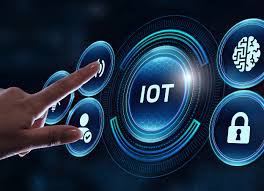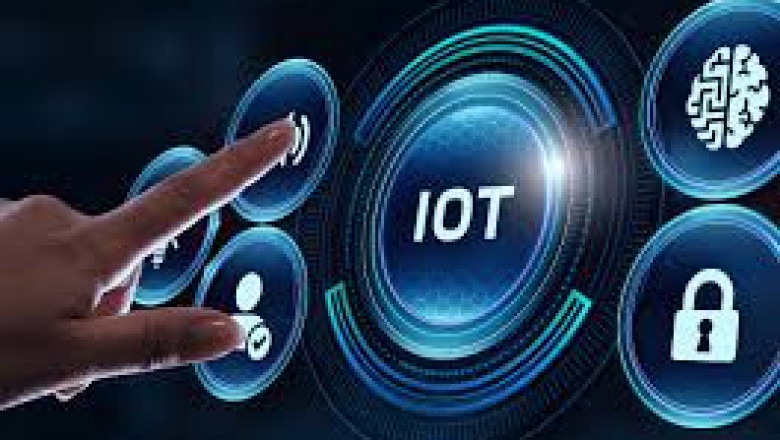views
The Internet of Things (IoT) is revolutionizing technology infrastructure by embedding connectivity, intelligence, and automation into physical systems. From smart cities to industrial automation, IoT’s ability to collect, analyze, and act on data in real time is reshaping how networks, data centers, and software ecosystems operate. This article explores IoT’s transformative impact on tech infrastructure, its challenges, and future trends.
1. Enabling Hyper-Connected Ecosystems
IoT bridges the gap between physical and digital worlds, creating interconnected networks of devices, sensors, and platforms. This connectivity demands scalable, low-latency infrastructure to handle massive data flows.
Key Developments:
-
5G Networks: Provide the bandwidth and speed needed for real-time IoT applications like autonomous vehicles and remote surgery.
-
Low-Power Wide-Area Networks (LPWAN): Technologies like LoRaWAN and NB-IoT support long-range, energy-efficient communication for smart meters and agriculture sensors.
-
Mesh Networks: Enable devices to relay data peer-to-peer, enhancing coverage in industrial settings (e.g., oil rigs).
Impact: By 2030, IoT devices will generate 79.4 zettabytes of data annually (IDC), necessitating robust network upgrades.
2. Edge Computing: Reducing Latency and Bandwidth Strain
IoT’s real-time data processing needs are shifting compute power closer to data sources, reducing reliance on centralized cloud servers.
IoT-Driven Edge Innovations:
-
Micro Data Centers: Deploy edge servers in factories or retail stores to process IoT data locally.
-
AI at the Edge: NVIDIA’s Jetson modules enable on-device machine learning for applications like predictive maintenance.
-
Fog Computing: Extends edge capabilities by creating a distributed layer between devices and the cloud (e.g., Cisco’s IOx).
Example: Tesla’s self-driving cars process sensor data locally via edge AI, making split-
second decisions without cloud latency.
3. Revolutionizing Data Management and Analytics
IoT generates vast datasets, pushing organizations to adopt advanced data infrastructure and analytics tools.
Infrastructure Adaptations:
-
Hybrid Cloud Systems: AWS IoT Core and Microsoft Azure IoT Hub integrate edge data with cloud analytics.
-
Time-Series Databases: InfluxDB and TimescaleDB optimize storage for IoT’s continuous data streams.
-
AI-Driven Insights: Platforms like Splunk IoT analyze sensor data to predict equipment failures or energy usage patterns.
Case Study: Siemens’ MindSphere IoT platform analyzes data from 1M+ industrial devices, reducing downtime by 30% in manufacturing plants.
4. Enhancing Security Frameworks
IoT’s expansion introduces vulnerabilities, prompting innovations in security infrastructure.
IoT-Specific Security Measures:
-
Zero-Trust Architecture: Requires continuous authentication for device-to-device communication.
-
Blockchain for Device Identity: IBM’s Hyperledger Fabric secures IoT device identities and data integrity.
-
Encrypted Firmware Updates: Companies like Armis ensure secure over-the-air (OTA) updates for connected devices.
Stat: 57% of IoT devices are vulnerable to medium- or high-severity attacks (Palo Alto Networks).
5. Powering Smart Cities and Sustainable Infrastructure
IoT is the backbone of smart city initiatives, optimizing resource management and improving quality of life.
Infrastructure Applications:
-
Smart Grids: IoT sensors balance energy supply and demand, integrating renewable sources (e.g., GE’s Predix Platform).
-
Intelligent Transportation: Barcelona’s IoT-enabled traffic lights reduce congestion by 21% through real-time adjustments.
-
Waste Management: Bigbelly solar-powered trash bins use IoT to optimize collection routes, cutting costs by 50%.
6. Industrial IoT (IIoT) and Industry 4.0
IIoT is transforming manufacturing, logistics, and supply chains through automation and predictive analytics.
Tech Infrastructure Upgrades:
-
Digital Twins: Virtual replicas of machinery (e.g., ANSYS Twin Builder) simulate performance, reducing physical testing.
-
Predictive Maintenance: PTC’s ThingWorx uses IoT data to forecast equipment failures, slashing repair costs by 25%.
-
Autonomous Robotics: Amazon’s Kiva robots leverage IoT to navigate warehouses, boosting order fulfillment speed by 40%.
7. Challenges in Scaling IoT Infrastructure
While IoT drives progress, it introduces technical and logistical hurdles.
Key Challenges:
-
Interoperability: Fragmented standards (e.g., Zigbee vs. Z-Wave) complicate device integration.
-
Energy Consumption: Battery-powered IoT devices require energy-efficient protocols like MQTT-SN.
-
Data Privacy: GDPR and CCPA compliance demands secure data handling across IoT ecosystems.
Solution: Initiatives like the IoT Connectivity Alliance aim to unify global standards.
8. Future Trends in IoT-Driven Infrastructure
Emerging technologies will amplify IoT’s impact on tech infrastructure.
Innovations to Watch:
-
AIoT (AI + IoT): Merging AI with IoT for autonomous decision-making (e.g., smart traffic systems).
-
Quantum IoT: Quantum sensors could enhance IoT precision in healthcare and environmental monitoring.
-
6G Networks: Expected post-2030, 6G will support terahertz-frequency IoT applications like holographic communications.
Prediction: By 2025, 75% of enterprise data will be processed at the edge (Gartner).
Conclusion
IoT is redefining tech infrastructure by prioritizing speed, scalability, and intelligence. From edge computing to smart cities, its influence is pervasive, yet challenges like security and interoperability remain. As AI, 5G, and quantum technologies converge with IoT, infrastructure will become more adaptive, laying the groundwork for a hyper-connected, sustainable future. Organizations that invest in IoT-ready infrastructure today will lead tomorrow’s innovation race.















Comments
0 comment